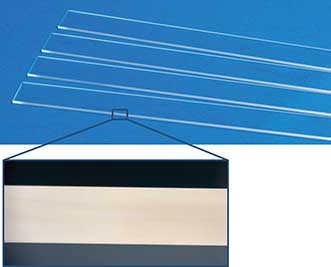Greater uptime, faster cutting and increasing affordability make fiber lasers the first choice where CO2 lasers once reigned supreme.
 When it’s time to cut, weld, ablate, mark or otherwise machine materials, manufacturers are increasingly turning to lasers. Falling system costs and better resulting product quality are two reasons why. Still, the need exists to further lower the cost of laser machining while expanding the range of materials that can be handled. For that, there’s progress in fiber and other laser technologies from greater power, more precise processing and new wavelengths.
An illustration of these trends can be found at Mazak Optonics Corp. The company, which has its North American headquarters in Elgin, Ill., does not make laser engines but does incorporate those supplied by well-known vendors to make laser-cutting equipment used at large companies and independent job shops.
Mazak Optonics has seen a significant change in laser machining technology over the past few years, according to Marc Lobit, general manager of sales support operations. “Laser-cutting technology is still shifting to fiber [lasers], with about 75 percent of our machines sold in 2015 being fiber,” he said.
Lobit noted that five or so years ago a majority of the company’s products used CO2 lasers. Fiber’s higher reliability and uptime, along with its associated decrease in maintenance costs as compared to CO2 lasers, have driven the change.
A big reason for this is the beam delivery system, which is straightforward for fiber lasers. In contrast, CO2 lasers employ mirrors to get the beam to the business end of the cutting machine, which leads to relatively high upkeep.
“[CO2 lasers] were very labor-intensive and expensive to maintain.” Lobit said. “Mirrors would become damaged. They would wear out over time from the heat that’s reflecting off of [them].”
The transition to fiber laser technology brought about other advantages, he added. The ytterbium fiber lasers output a beam at 1070-nm wavelength, about a 10th of that of a CO2 laser. The result of this difference, the greater uptime, and other differences was faster cutting using a fiber laser, and better results, particularly when it came to edge quality. Consequently, a single fiber laser cutting machine can replace two to three of the older systems.
When it’s time to cut, weld, ablate, mark or otherwise machine materials, manufacturers are increasingly turning to lasers. Falling system costs and better resulting product quality are two reasons why. Still, the need exists to further lower the cost of laser machining while expanding the range of materials that can be handled. For that, there’s progress in fiber and other laser technologies from greater power, more precise processing and new wavelengths.
An illustration of these trends can be found at Mazak Optonics Corp. The company, which has its North American headquarters in Elgin, Ill., does not make laser engines but does incorporate those supplied by well-known vendors to make laser-cutting equipment used at large companies and independent job shops.
Mazak Optonics has seen a significant change in laser machining technology over the past few years, according to Marc Lobit, general manager of sales support operations. “Laser-cutting technology is still shifting to fiber [lasers], with about 75 percent of our machines sold in 2015 being fiber,” he said.
Lobit noted that five or so years ago a majority of the company’s products used CO2 lasers. Fiber’s higher reliability and uptime, along with its associated decrease in maintenance costs as compared to CO2 lasers, have driven the change.
A big reason for this is the beam delivery system, which is straightforward for fiber lasers. In contrast, CO2 lasers employ mirrors to get the beam to the business end of the cutting machine, which leads to relatively high upkeep.
“[CO2 lasers] were very labor-intensive and expensive to maintain.” Lobit said. “Mirrors would become damaged. They would wear out over time from the heat that’s reflecting off of [them].”
The transition to fiber laser technology brought about other advantages, he added. The ytterbium fiber lasers output a beam at 1070-nm wavelength, about a 10th of that of a CO2 laser. The result of this difference, the greater uptime, and other differences was faster cutting using a fiber laser, and better results, particularly when it came to edge quality. Consequently, a single fiber laser cutting machine can replace two to three of the older systems.
Member Exclusive: To read the complete article, please Login or Register